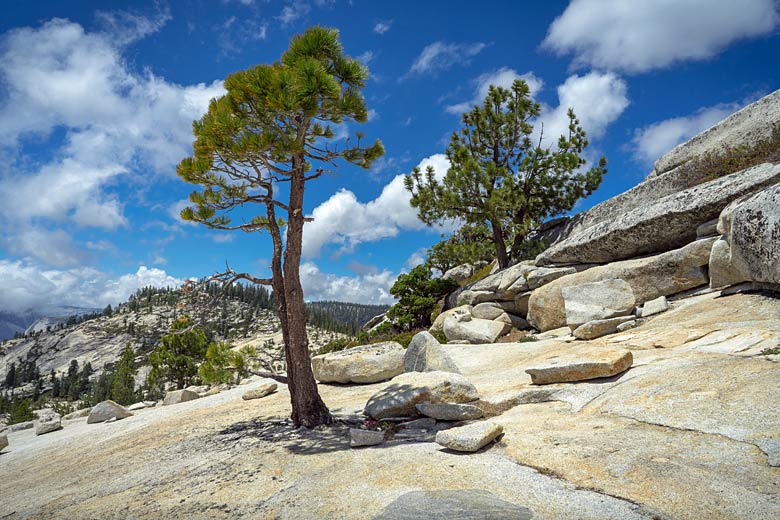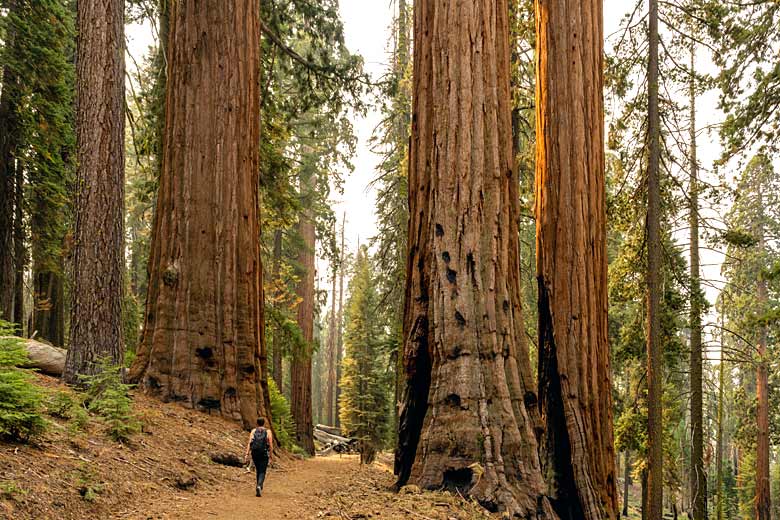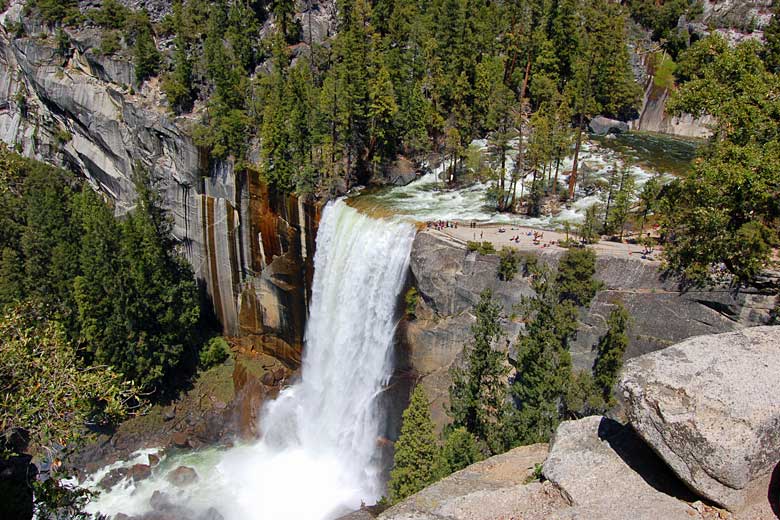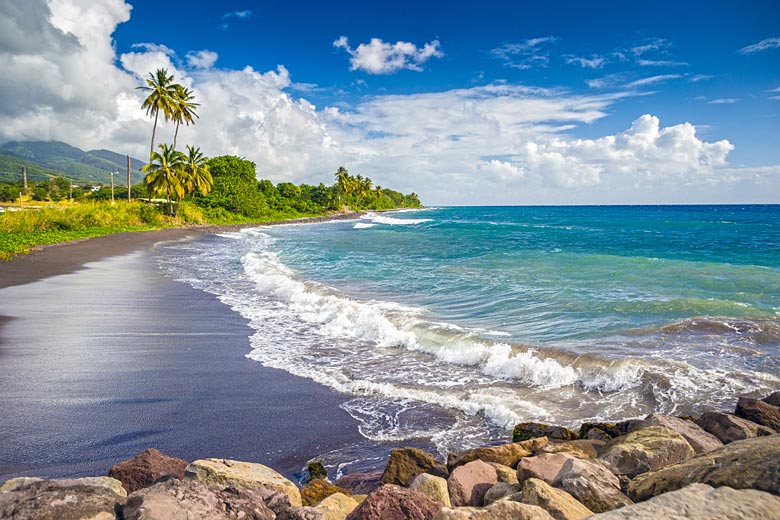A beginner's guide to magnificent Yosemite Mariposa County
It's easy to see why 3.5 million visit Yosemite each year: those gargantuan granite rock formations, crashing waterfalls and the giant sequoias of Mariposa Grove are all world-famous attractions in their own right.

Throw in looking-glass lakes in the high country's subalpine wilderness and the possibility of spotting black bears, coyotes and bobcats too; is it any wonder people regard this national park so highly?
From the now-ghost towns that once boomed during the famous California Gold Rush, to the countless miles of hiking and snowshoeing trails in and out of the national park, here's what to do in California's adventurer's playground: Yosemite Mariposa County.
Making the most of Yosemite Mariposa County: find holidays to Yosemite with long-haul experts Travelbag*, while VRBO* offers a wide range of accommodation for all budgets and Viator* has numerous guided experiences.
Get acquainted with the valley's landscapes
Carved by glaciers some 10 million years ago and framed by the hulking granite walls separated by crashing water and ice, Yosemite Valley's natural splendour spans lofty waterfalls, screensaver-worthy rock formations, thriving meadows and so much more.
Most visitors do arrive via Yosemite Valley, so it's a good idea to get acquainted with your route beforehand. Trust us: you'll need a few photograph stops. Exploring the base of the mighty Half Dome and El Capitan on the way in is a good start, but Tunnel View, on California State Route 41, offers an altogether different view of the pair.

Approach from the west for a glorious valley view of Half Dome and El Capitan, alongside the majestic Bridalveil Fall, appearing out of the Wawona Tunnel.
...and explore the wider national park
Park daytrippers will usually stick to the valley floor, but those with more time to explore should certainly spread their wings.
The north of the national park, which is best visited in spring and summer due to wintry road closures, features the famous, winding Tioga Pass road towards the gorgeous Tuolumne Meadows: one of the Sierra Nevada's highest elevation meadows and a haven for nature lovers. It's relatively flat so can be explored by most abilities.
To the south you'll find Wawona, a great base for year-round access and historic accommodation at the famous Wawona Hotel; a National Historic Landmark and one of California's original mountain lodge resorts.
Since 1876 the hotel has attracted many famous guests, including former presidents Theodore Roosevelt and Ulysses S. Grant, and remains a popular place to stay.
It was originally built to serve the growing number of tourists visiting the Mariposa Grove of Giant Sequoias*, whose 500-strong mature sequoia trees are said to be the largest living things on earth. Look out for the Grizzly Giant, one of the oldest living sequoias at 2,700 years old.

For a guided experience, consider taking an official shuttle bus up to the 7,214 ft Glacier Point; it will feel like cheating, but your legs will thank you for it.
Allow four hours for the return journey including stops, though many take a one-way bus ticket to the summit and will then hike back down on their own accord.
Follow the Mariposa Gold Rush Trail
California's gold rush history glitters back to 1848 when the first bounty was found in the state, drawing around 300,000 people from the US and beyond in a 'eureka or bust' moment.
Many of them settled in Mariposa County, so its cultural gold rush towns are abundant stories to tell; take Coulterville for example, a small town with a present population of just 23 people but one that once housed thousands, along with the Mother Lode's largest Chinatown.
The Gold Rush also spawned out of Mariposa, after explorer and future presidential candidate John C. Fremont purchased Rancho Las Mariposas in 1847, striking gold the following year.
Mariposa itself features more than 60 buildings of national interest, including the oldest working courthouse west of the Mississippi. Standing since 1854, visitors can view historic county maps and even sit in on active court sessions.
Its main thoroughfare offers a glimpse at Sierra-style buildings of the past, while a further look at the region's history can be found at the immersive, and award-winning, Mariposa Museum & History Center.
Hike some of the most celebrated trails
With more than 800 miles of trails to discover, Yosemite and hiking go hand in hand. The Mist Trail is the national park's most popular trail, and is arguably California's greatest too.

Almost entirely uphill, this seven-mile there-and-back trail peaks with up close views of the majestic Vernal and Nevada Falls respectively, and diverges with the John Muir Trail for onward hiking.
It's advised to go with a guide when tackling longer hikes, like the 16-mile Half Dome path, via the John Muir Trail, but there are plenty of valley day hikes to enjoy too.
Mirror Lake, just two miles to the lake and back, offers exemplary scenery and epic photographs on a sunny day, as its name suggests, and its length is ideal for families.
Top tip: be sure to visit Travel Yosemite and the National Park Service to help plan your adventures in Yosemite Mariposa County.
Go skiing & snowshoeing in winter
Yes, you can ski in California! The state's oldest downhill skiing area Badger Pass is located to the west of Yosemite and is one of only three lift-serviced ski areas in the US altogether.

With 10 slope runs of varying difficulty, and around half suitable for novices, Badger Pass is ideal for beginners. It also has a family-friendly tubing area, and with around 84 miles of marked trails, it's also one of the county's most popular locations for snowshoeing.
Go chasing waterfalls
From the triple-pronged beast Yosemite Falls to one of the thousands of trickling rock streams across the national park, nowhere can compete with Yosemite for waterfalls. But where to begin? Firstly, they're best visited after the thaw and many come into full power around May.
We need to begin with the aforementioned Yosemite Falls: at a behemothic 2,425 ft, and cascading over three levels, it's one of the highest waterfalls in the world.
It's, therefore, no surprise that it's one of the easiest to spot, as it towers above much of the valley; Bridalveil and Sentinel Falls are also easy to spot on your way in.
On the contrary, Chilnualna Falls in Wawona is one of Yosemite's least-visited large waterfalls as it can't be seen from the road and requires a fairly strenuous hike.
And then there's the natural phenomenon of the Yosemite Firefall, at Horsetail Fall. At certain times of year, the waterfall appears to have a fiery orange glow when backlit by sunset and when the sun hits just right.
This only happens for a couple of weeks in the second half of February, so time your trip right if this is on your list.
Climate in Yosemite
| Jan | Feb | Mar | Apr | May | Jun | Jul | Aug | Sep | Oct | Nov | Dec | |
|---|---|---|---|---|---|---|---|---|---|---|---|---|
| Maximum daytime temperature °C | ||||||||||||
| Hours of sunshine (daily) | ||||||||||||
| Days with some rainfall |
The above guide shows the climate in Yosemite. Find out more about conditions across the state in our complete guide to the climate in California.
Ready to explore Yosemite Mariposa County? Check out our current offers on holidays with Travelbag, self-catering accommodation with VRBO and experiences with Viator.
More about Yosemite
- Overview
- Best time to visit
- Weather by month
- 5-day weather forecast
- Destinations
- Travel advice
- Deals & discounts
Yosemite by month
Jan Feb Mar Apr May Jun Jul Aug Sep Oct Nov Dec
Explore holidays in the sun for less
- Beach holidays
- Family holidays
- City breaks
- Summer holidays
- Winter sun holidays
- Holiday offers
- Top travel brands
- Airlines & flights
- Discount hotels
- Airport parking deals
- TUI
- Jet2holidays
- easyJet holidays
- Love Holidays
- Black Friday sales
Airport parking
- Manchester Airport
- Stansted Airport
- Bristol Airport
- Luton Airport
- Birmingham Airport
- Edinburgh Airport
- Gatwick Airport
- Glasgow Airport
- Newcastle Airport
Airport lounges
- Manchester Airport
- Birmingham Airport
- Bristol Airport
- Edinburgh Airport
- Glasgow Airport
- Heathrow Airport
- Newcastle Airport
- Stansted Airport
- Gatwick Airport
Be inspired
Get your weekly fix of holiday inspiration from some of the world's best travel writers plus save on your next trip with the latest exclusive offers
We promise not to share your details

























